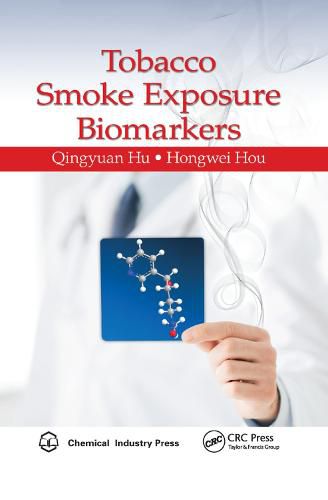Readings Newsletter
Become a Readings Member to make your shopping experience even easier.
Sign in or sign up for free!
You’re not far away from qualifying for FREE standard shipping within Australia
You’ve qualified for FREE standard shipping within Australia
The cart is loading…






Written by experts in the analytical chemistry of tobacco smoke, Tobacco Smoke Exposure Biomarkers summarizes the toxicology, metabolic pathway, and biomarkers of nicotine, TSNAs, PAHs, VOCs, AAs, Catechol and Hydroquinone, HCN, CO and NOx, and heavy metals, and the use of this biomarker in exposure assessment and/or cigarette smoke exposure environmental epidemiology.
A convenient one-stop guide, the book brings together information on some exposure biomarkers and nicotine addiction in humans with regulatory implications and strategies. The authors also include discussions of how smoke exposure biomarkers may be used to shape regulation and health policy. Ethics guidelines, details of method development, and the validated relative bioanalytical method provided in the appendixes rounds out the coverage. The book gives you tools to further research biomarkers for tobacco carcinogens and to face emerging health challenges such as delivery of nicotine via electronic cigarettes.
$9.00 standard shipping within Australia
FREE standard shipping within Australia for orders over $100.00
Express & International shipping calculated at checkout
Written by experts in the analytical chemistry of tobacco smoke, Tobacco Smoke Exposure Biomarkers summarizes the toxicology, metabolic pathway, and biomarkers of nicotine, TSNAs, PAHs, VOCs, AAs, Catechol and Hydroquinone, HCN, CO and NOx, and heavy metals, and the use of this biomarker in exposure assessment and/or cigarette smoke exposure environmental epidemiology.
A convenient one-stop guide, the book brings together information on some exposure biomarkers and nicotine addiction in humans with regulatory implications and strategies. The authors also include discussions of how smoke exposure biomarkers may be used to shape regulation and health policy. Ethics guidelines, details of method development, and the validated relative bioanalytical method provided in the appendixes rounds out the coverage. The book gives you tools to further research biomarkers for tobacco carcinogens and to face emerging health challenges such as delivery of nicotine via electronic cigarettes.